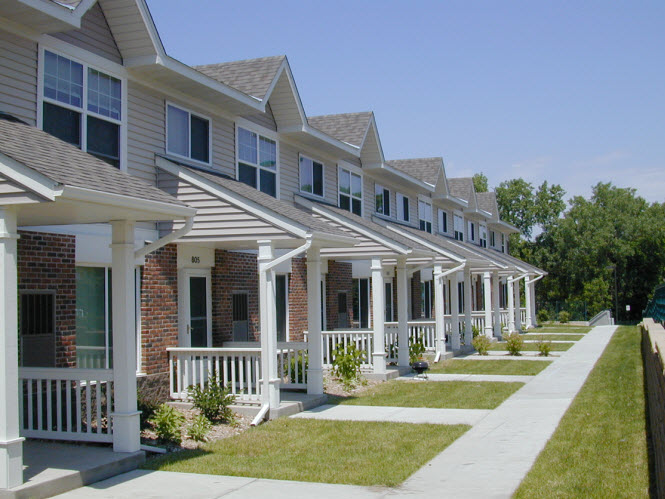
Last week, the Davis City Council had a discussion on the city’s affordable housing program. Here are some of the thoughts from councilmembers.
Brett Lee said his preference is for housing that’s integrated. He said he has problems with separate affordable and market rate developments. “The social research that I’ve seen seems to indicate that… when people are fully integrated it provides better outcomes for all involved. So my strong preference would be unless there’s a reason to not do that, (integration) would be my preference.
“For general affordability, I think the idea that there are affordable units and the market rate integrated on the same parcel would be my preference,” he said. He is willing to look for alternative ways for people to meet the affordability goals of the city “in a way that allows traditional university students to live there. Allowing the developer to have some flexibility to have a creative approach to have some affordability for university (students) in a different way from what we’ve kind of seen in the last couple of projects.”
He said he’s not talking about squishing eight students into a building that would normally house four and calling it affordability. He said he’s “talking about ways to build a complex where there are some units set aside and perhaps the rent is not ‘big a’ affordable for extremely low income but maybe done at a different level that allows full-time students to move in there.”
He has agreement on the mismatch “between fees being based on front doors versus bedrooms.” He said he wanted to see the impact fees being based upon bedrooms. “I’d also like to see density based upon bedrooms,” he said. He said it should not be how many units per acre but rather how many bedrooms per acre that is the key indicator of density. “I think it just is a more sensible policy to track the number of bedrooms.”
Mayor Pro Tem Lee noted that Sterling limited the occupancy to one student per bedroom, whereas Lincoln40 is looking at two students per bedroom. He said, “Given the extreme rental housing shortage, is it so far-fetched to say a year from now, well we’re going to have four per bedroom?” Given the shortage of rental units, “students would be willing to live in that situation.” But he wants that to count towards density.
The mayor pro tem added, “A full exemption for mixed use, seems like that’s inappropriate.” He said the analysis shows there is some percentage of affordable housing that would make sense and allow the developer to make money without a full exemption for that type of housing stock.
Rochelle Swanson pushed for mixed pricing within a complex and truly integrated affordable housing. “It’s not enough that it’s across the street,” she said.
She agreed with Brett Lee that a full exemption for mixed use was not necessary but said, “I think the financials are going to dictate that.” She suggested that staff reach out to those building 
the projects to find out what some of the key financing issues are.
“Thirty-five percent of zero is still zero,” she said referring to the fact that if the units are not built because of the requirements, we get no affordable housing. “It should probably be lower than (35 percent) so that we do see it being built.”
She also pushed for creativity to have some micro-units which are affordable by design.
She said, “I agree that number of rooms and not number of units is the appropriate number we should be looking at.”
Earlier, Will Arnold had cited Matt Williams as pointing out that existing housing is always going to be less expensive than building new housing. Rochelle Swanson, building off that point, said we should examine our floor area ratio (FAR) requirements. “Another group that we miss, that missing middle, some of these folks started out young and got a small house and as their families grow they end up moving to Woodland or Dixon because they can’t do a remodel that makes sense because our requirements are so tight.”
She said, “We need to be looking at density within existing neighborhoods.”
Mayor Robb Davis noted that mixed-use units are really costly to build and therefore the affordability within them is more challenging. He wants to look at Davis on a finer level to examine, for instance, how to incentivize mixed-use housing in the downtown.
“What’s the reality of trying to achieve an affordable unit in the downtown given the land prices and small parcel sizes?” he asked.
Housing is one of the more complex issues they deal with on council. He noted in the past the city built larger housing developments which enabled them to have relatively large dedicated sites to build large “a” affordable housing.
“Those days now largely are done,” he said. “We aren’t getting any large developments like that that lead to that kind of ability to create the affordable set aside inside.”
He also noted we need to keep talking about the disappearance of RDA (Redevelopment Agency) and the $2 million a year that used to come from that. “The reason that’s important is that we do have this large stock of capital ‘a’ affordable housing that is at risk. It’s at risk because it’s just going to fall apart. And that’s probably our fault historically for not making sure that the amount of money that was being set aside for rehabilitation was built into the pricing of the development.
“We do need a revenue stream just to make sure we maintain some of the housing that’s aging now,” he said. And what is that revenue stream?
He also asked what can we expect from state funds that were just passed and what can they be used for? Can they only be used for new construction? Can they only be used for capital “a” affordable housing? “We need more on that,” he said.
For Robb Davis, the bottom line he saw was that we want workforce rental housing to come to the market. We want to figure out how to incentivize it.
Right now, we have a stomach for more student-oriented housing, but he questions whether that is going to remain forever, because what we really need is to incentivize dense workforce housing.
“While we recognize that we need more student-oriented housing and we pushed the university to do more, we also recognize that that’s not meeting the needs of people who work here and are not students,” he said.
He said “if our affordable 35 percent (requirement) is meaning that people are not going to build them, then it is time to review that.”
He said regardless of whether it’s student-oriented or workforce, “we’ve got to find that sweet spot where there’s an incentive to cross-subsidize within a rental property a certain number of affordable units.”
He said that’s important because “it means we will get new units built. We need new units built.”
And this gets away from having segregated and set-aside affordable housing and toward integrated units.
He said we want to move away from projects with a low number of units with a lot of rooms, to something that is going to “make housing more available for families and others besides students.”
On in-lieu fees, he said he has been in favor of them because of our trust fund, but he wants to find other funding sources so they can move away from in-lieu fees. “Just do away (with) in-lieu fees in my opinion,” he said, but we need to find a revenue stream and then set in-lieu fees really high to disincentivize their use.
The bottom line from the council is projects that integrate affordable within the projects, and reviewing inclusionary percentages in rental projects to see if they are stymying project proposals coming forward.
They are all concerned about students – not just building for students but creating affordable student housing – and, finally, not just charging by unit, but actually looking at the number of rooms and putting that back into the balance.
—David M. Greenwald reporting







Amazingly, after all the discussions about sustainability, climate, efficient and appropriate land use, the highest standards of green building, either LEED or preferably Living Community Challenge, and water-wise landscape, this article on affordable housing is illustrated with the most ordinary row of houses, no solar and wide grassy areas. What kind of vision for what beautifully and appropriately designed affordable housing could look like with drought tolerant landscape.
I think I need a disclaimer on stock photos
Perhaps we can get a photo of New Harmony or Cesar Chavez Plaza to illustrate future articles on housing.
I could do that, but the affordable housing that they are talking about is not going to New Harmony or Cesar Chavez style.
What would the style of the new housing be? Would it look like the West Village apartments? Maybe that would be a better photo to use.
Ig
If you read the comments from the councilmembers, Robb Davis specifically said that the days of dedicated three acre affordable land set sides are over and the council moving towards integrated projects where affordable and market rate are integrated into the given projects.
Since “mixed use” is currently exempt from Affordable housing requirements (and it appears that the council is not going to fully apply those requirements), I hope that developers don’t respond by proposing mixed-use where it doesn’t belong.
Already, we have the “Del Rio” mixed-use development (at 5th & Pena, far from downtown). Would that have even been proposed, if mixed-use wasn’t exempt from Affordable housing requirements? (Actually, that development is entirely surrounded by purely commercial-type development, and may not have been the best location for any type of residential development.)
Since the city seems intent upon continuing some form of exemption for mixed-use, it appears that such developments won’t meet the goal of providing Affordable (or affordable) housing. (However, I realize that downtown can still be an appropriate location for redevelopment.)
I understand that “flat-stacked” residential units are also exempt from Affordable housing requirements. (Not sure if this is the correct terminology, nor do I fully understand what that is.)
On a related note, what’s to prevent the purchasers of mixed-use developments (such as those at Del Rio) from using their units entirely for residential purposes? (Thereby defeating the supposed purpose of such developments.)
http://cityofdavis.org/home/showdocument?id=710
Thanks, David. Not sure why you’ve posted the development agreement for the Cannery. Are you suggesting that I search through this document, in response to the questions I posed?
Also – regardless of any “agreement”, what’s to ACTUALLY prevent purchasers of mixed-use units from using their units entirely for residential purposes? (For example, leaving the unit officially “vacant”, while perhaps using it as personal storage space?)
(Actually, I’m not even sure that the commercial space is a separate “unit” from the residential space.)
As a side note, many residents already use their garages as “personal storage space” within entirely residential areas. (But, those developments are not exempt from Affordable housing requirements.)
I’m suggesting that that is the answer to your question. It binds the developer to the conditions of approval and everything else.
Seems like that doesn’t answer my question, regarding subsequent uses of the units. (That is, unless we have “mixed-unit police”, who follow-up on the subsequent uses.)
I see an opportunity for gamesmanship, and skirting the purpose of mixed-use developments. Of course, developers might prefer it, if such developments are completely (or partially) exempt from Affordable housing requirements.
Again, whatever happens at Del Rio might ultimately show the potential pitfalls. (Do any of those units have commercial activities in place, yet?)
Are you asking about the enforcement mechanism?
Yes. That, and what the purpose is.
For example, at Del Rio, what is envisioned/allowed for the first floor of those units? And, how will the city ensure that this is what they’re used for, in coming years?
Also, is the first floor an entirely separate “unit”, from the residential area above?
The same questions would apply to any proposed mixed-use development.
(Not sure why “flat stacked” is also apparently exempt from Affordable housing requirements.)
In terms of enforcement you have both code enforcement then you have the legally binding contract that you can obviously enforce and the courts.
I’m not sure I understand the other question
You’re referring to the “potential” methods of enforcement. Seems like that wouldn’t occur, unless someone initiated a complaint (and perhaps endured the time and cost to follow-through on it).
I found some information, regarding Del Rio (below). The commercial/residential spaces are a single unit. The site was rezoned from “business park” to “neighborhood mixed use”.
It seems likely to me that many of the commercial spaces may never house commercial activities, thereby defeating the purpose – while simultaneously converting “revenue-generating” commercial property to primarily residential use (while also avoiding Affordable housing requirements).
Not sure that I’d describe that as a “win-win” from the city’s point of view, to say the least.
http://city-council.cityofdavis.org/Media/CityCouncil/Documents/PDF/CityCouncil/CouncilMeetings/Agendas/20140826/06-Del-Rio-Place-Live-Work-Presentation.pdf
Regarding my other question, I was wondering why “stacked flat condominiums” are also apparently exempt from Affordable housing requirements.
It’d be a clear cut of breech of contract, and in Davis, someone would file on you.
They actually talked about why the exemptions on Tuesday, I would suggest you watch the affordable housing workshop.
(I’m also assuming that “code enforcement” would involve costs, to the city. That is, “if” someone even complained about it.)
But it would probably come with massive fines too. You’re posing hypothetical that really don’t come up in the real world. You’re basically asking what happens if someone violates the developer agreement blatantly. Well that’s why they sign a contract.
I would think that a “lack of” commercial activity is not grounds for a complaint. If the commercial space has no official activity, how would anyone (other than the residential occupants of the unit) know what the commercial space is being used for?
Or, do you think that (*wink-wink*) many occupants would simply leave the “unused” commercial space empty (and “off limits” to other personal use)?
Correct – afterall you could have unfilled space and that’s not a violation.
Regarding “massive fines”, are you referring to what the city would impose upon an individual owner/occupant of a unit, who starts using the “commercial space” for non-commercial uses?
The solution (and the new “affordable” stock photo):
https://www.hayneedle.com/product/outdoorlivingtodaysr812santarosa8x12ftgardenshed.cfm?ltype=child&tid=OLT009-1
Sorry – not enough “density” (unless they’re double-occupied and stacked up on top of each other, several stories high). 🙂
Then (maybe) it will be “affordable by design”.
Shared walls like in San Francisco; four-to-a-room as Brett suggests students are prepared to do; stacked ten stories high as Taramino proposes for downtown — plus a port-a-loo!
Seems strange that such proposals are not being submitted and/or “accepted” by UCD, where there are no Affordable housing requirements, land acquisition costs, concerns regarding greenbelts . . .
Oh – and no adjacent or nearby property owners, who would be directly impacted by such proposals. (A “minor” omission in my comment, above.)
Ron… you do realize that UCD has to “call for proposals” for a ‘proposal’ to be made, right?
Unlike the City, where the property owner is allowed to make proposals for their property… or property they have ‘options’ on…
Yes. I understand that this has already occurred (at least, to some degree).
Not to single anyone out, but I wonder if the developer that Alan referred to participated.
Ron… re:
It is a zoning violation… generally identified on a complaint-driven basis… generally City will do a cursory evaluation, and if there is a violation, would communicate with the OWNER (zoning runs with land, not individual occupants), with a notice of violation, and owner would be given a window of time to clarify, challenge, and/or correct.
Failing resolution, fines and other actions could follow.
Don’t know about the “massive” thing tho’ … that would depend on action (or lack thereof) by owner, and how egregious the violation, and failure to correct were…
Hope that helps… even trolls like me like to help folk at least once a day…
Thank you.
That’s pretty much what I thought. David’s comment seemed to have more to do with a developer directly violating an agreement, rather than a subsequent owner of the property.
In any case, it seems that the “driving force” for mixed use (and perhaps stacked-flat) developments is the ability to bypass Affordable housing requirements (which other types of developments are subjected to).
In the case of Del Rio, it also resulted in conversion of commercial space for (primarily) residential use.
(To clarify, the zoning for the Del Rio site was apparently changed from “business park” to “neighborhood mixed use”, as noted above.) One might wonder about the viability of the limited commercial component of that development, even if the new owners hope to use it that way.
This entire issue (discussed in several comments, above) seems like something the city should carefully consider. (But, it seems that they haven’t, so far.)
To be clear, Ron, individual owners are “successors in interest” to the original developer. They are as liable as the original developer, as the requirements ‘run with the land’. No difference. Basic principle in the law. And specifically called out in the governing documents.
My 3:27 post meant as a PSA meant to increase the knowledge base of all, not just Ron…
Trolls try to do that at least 3 times a year…
Understood. And as you noted (and I suspected), the owner would likely be given time to “correct” the situation, probably without incurring a fine. (That is, if anyone even “knew” that the owner was not using the commercial space as intended.)
The entire arrangement (regarding bypassing Affordable housing requirements to enable “mixed use”) “stinks” to high heaven. A sham, if you will. (At least, in the type of example I’ve mentioned.)